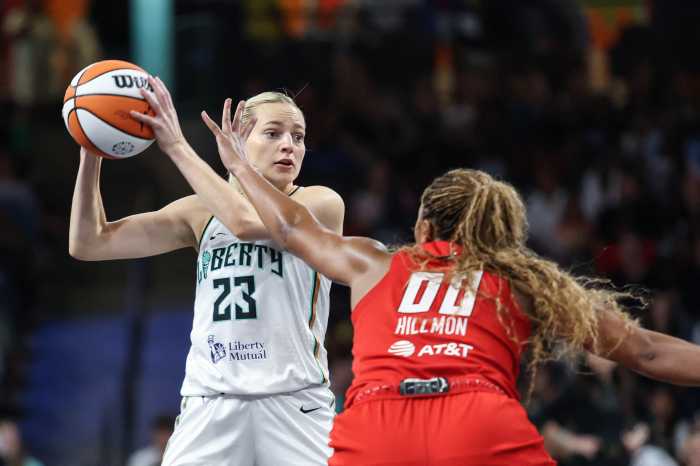"Graffiti is not just an eyesore; it is an invitation to criminals and a message to citizens that we don’t care."
That was the message delivered by Mayor Michael Bloomberg back in mid-July when he kicked off a citywide campaign against graffiti as part of an intense effort to improve the quality of life throughout the five boroughs.
Over the past week, Councilman John Liu rolled up his sleeves in downtown Flushing as did Councilmember Dennis Gallagher in a widespread clean-up covering the communities of Ridgewood, Glendale, Middle Village, Maspeth, Woodhaven and Richmond Hill.
The coordination and all service for the graffiti blitz is being handled by the mayors Community Assistance Unit (CAU) and is being provided free of charge, as part of the partnership between city government and local businesses.
Joann Ariola, Queens South director of the CAU, is responsible for the clean-up coordination within the community boards in her jurisdiction.
"Graffiti is among the top three complaints that CAU handles," Ariola said. "Although graffiti has always been a widespread problem, Mayor Bloomberg and Commissioner [Jonathan] Greenspun have tackled this problem with a level of commitment and dedication that is making a tremendous difference in all communities."
In fact, the graffiti program is a regular promo on the mayors weekly radio show and also part of the recorded announcement on the hold line of the CAU.
The protocol for participating in the program is based on a simple waiver form available at the nyc.gov website. Applications are downloadable from the site and must be completed and faxed. Individual businesses can also call 311 to make the arrangements.
Community groups and organizations can mobilize their clean-up efforts also by filling out the waiver forms and either submitting them directly to CAU or by calling 311.
According to the anti-graffiti website at nyc.gov, the amount of ground that has been covered thus far in the attack against graffiti translates into an area equal to hundreds of thousands of miles.
The other remarkable facet of the program is that every waiver submitted to CAU will be attended to within the same year that it is filed. Some locations are re-visited on a per-need basis.
Clean-ups are expected to continue until the weather becomes a deterrent. However, the unit is making provisions to continue on through the colder months by switching to oil-based paint which is more suitable for work in the winter months.
The graffiti removal is performed with the use of spray paint and power washing trucks that are part of the Economic Development Corporation (EDC). These trucks are operational five days a week and alternate their projects among the five boroughs.
One key to expanding the programs success is to encourage councilmembers to attempt to fund individual trucks for their own communities. This would facilitate having more coverage in each area and not have to depend on the limited accessibility of the trucks.
Local not-for-profit groups and precinct councils are also eligible to participate in the program and can do so by applying for vouchers which they can redeem at the east and west sanitation depots where the paint and clean-up supplies are stored. These removals are usually scheduled only on weekends.
The NYPD will provide the resources for extensive investigations into graffiti crimes and will serve as the enforcement arm of the task force. In addition to regular patrols that target this form of vandalism, the Police Department will continue to use tips to find and arrest individuals who commit graffiti crimes. In addition, the mayor’s criminal justice coordinator will work with the Police Department, the district attorneys, and the court system to ensure that graffiti violations are vigorously enforced and prosecuted. To report graffiti vandalism, citizens can call the NYPD’s 24-hour quality-of-life hotline at (888) 677-LIFE (5433).

































